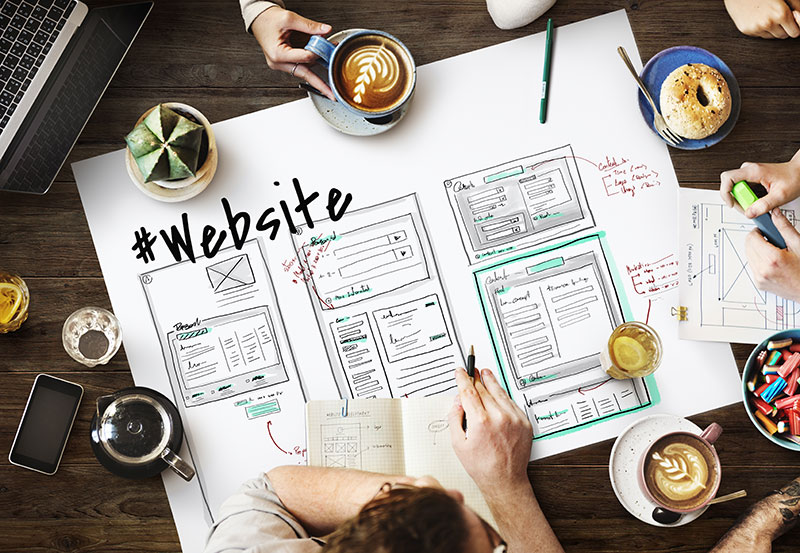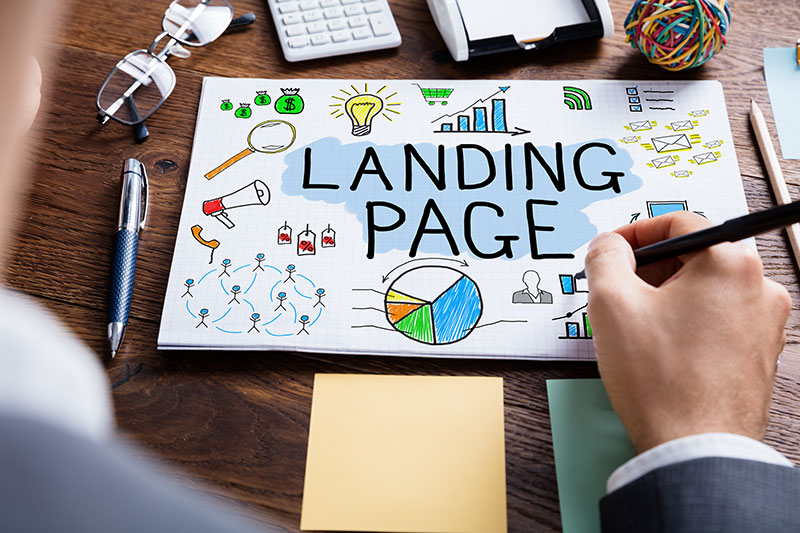Custom Websites
What is Web Design?
A digital presence for your business is just as, if not more, important than a physical storefront these days. More often than not, a consumer’s first impression of a business comes from its web presence. Because of this, a website is much more than just a place to get information about a company and its services. A website’s design should be a reflection of your brand and tell a story about who you are. Web Design is the communication of your message to your audience online.
For a website to be a successful component of a business, it must be developed with quality in mind. Websites that are intuitive to navigate and offer premium content to their visitors convert at an exponentially higher rate than those without. The things that make up this user experience are what encapsulates web design. Some of these variables are CRO(Conversion Rate Optimization), SEO(Search Engine Optimization), and maintenance.

Why is it Important to Invest in Web Design and Development?
Keeping your website up-to-date and running smoothly is crucial for doing business today. More often than not, consumers will visit a company’s website before making a purchase. Investing in a great website for your business is invaluable, as it will bring credibility and build trust with current and prospective customers. Optimizing your online presence is a major factor for building and maintaining a successful business; you can read more about developing strategies that will allow your business’s website to rank higher on search engines here.
What Does Web Design do for My Business?
Web design can be complicated. The value of good web design is what keeps web design companies operational. Good web design functions to promote and elevate a business, but is complex.
Conversion Rate Optimization for Web Design
CRO in regard to web design is the practice of organizing information in a way that promotes converting page or site visitors. Like any conversion strategy, web design is specific to the business’s target audience. However, every target audience converts best when they have a good user experience. Achieving this on a website includes structuring the site as a whole, as well as each page individually, in a way that is intuitive and enjoyable to navigate. To optimize conversions, the navigation of a website should be constructed with CTAs in mind.


Calls to Action
Calls to Action(or CTA) are the cornerstone of converting visitors into customers. They are what prompt a visitor to take action and typically signal the next step in the buyer’s journey. Every Learn More, Add to Your Cart, and Subscribe button is a Call to Action. Each one of these should be carefully considered, but often need tweaking after launch. If a CTA isn’t converting well and you know you’ve got a killer product, the CTA lifecycle likely needs adjusting. It might need to be pushed further down the page after a product’s explanation or the Call to Action itself might be unclear. Convincing a visitor to enter the next phase of the buyer’s journey is dependent on the quality of the content and how it is received. A good way to influence customer buy-in is to provide value upfront.
Content
Although CRO design has the intention of maximizing the ROI delivered by a page, investing in quality content will often do much of the work. Content across a website should be branded specifically to the business. That content should be unique, meaning it isn’t copied entirely from another source online. Unique content that is useful to your visitors helps establish trust and build brand loyalty. Common ways to include content that can be seen as a resource is by presenting them as service pages and blogs. Service pages should not just describe what a business does, but why they do it and what a prospective customer can expect. Custom blog content invites a visitor into the community of people who need what a business has to offer. Blogs should be well researched, resourceful, and written in a way that communicates properly with a target audience. To read more about content creation, read our page here[Link to Content Page]. Not all content is appropriate for the entirety of your audience, though. Identifying a segment within your audience will present the opportunity to create a funnel for them, which should take them to a landing page.


Landing Pages
Landing pages, which are known by a myriad of names such as “lead capture pages” and “destination pages,” are pages specifically designed to convert an audience. They are often paired best with Paid Advertising, which you can read more about here[Link to PPC Page]. On your website, visitors are presented with all of the choices and navigation options your website has to offer. Landing pages are designed to take leads on a journey that ends in a conversion; that means cutting down on distractions like links to outside pages. But even the best offers won’t convert without good UX/UI.
UX/UI
UX(User Experience) and UI(User Interface) are often lumped together because done well, they lean on each other. UX concerns how a site feels to use. Good UX makes the experience smooth and intuitive. UI is a site’s layout. How content on a website and its subsequent pages are arranged, how they read, and how items interact with one another.

Search Engine Optimization for Web Design
Doing Search Engine Optimization(SEO) for a website’s design refers to the quality of its build and its content. For the most part, it is the behind-the-scenes stuff that helps search engines identify the value and authority of a website. The variables here are ones that can be evaluated and scored; they then contribute to the potential a site has to rank highly(appear first in search results).
Businesses often hear the term “fully custom website,” but what’s so good about a custom site? WordPress, which has a market share of about 40% of all websites, has thousands of template sites that work for all sorts of businesses. The problem with generic websites is that they weren’t made for your business- they likely weren’t even made with your industry in mind. A custom website is made with your business in mind, so there’s no need for a generic interface or generally applicable limitations. Not just any custom website will do, though.
A site that is built custom for a business must be managed and maintained. Each page must be optimized with custom content, title tags, meta descriptions, alt tags, and image file optimization. An important note regarding custom content is that duplicate content hurts a business’s ability to rank. Some marketing agencies copy and paste content across multiple(sometimes hundreds) websites for similar services. Google filters this content, making it less likely to be of value to the business.
Here are a few additional factors that a website must consider to rank well:
SSL (security)
Google has announced that it will prioritize websites that are safe to use, which having an SSL. The easy way to tell if a site has an SSL is by seeing if it is prefixed by HTTPS rather than HTTP.
Directory Listing Management
Consistent data online helps with a business’s credibility. Monitoring business information, especially the listed Name, Address, and Phone number is hugely important. You can audit your business’s listed information here.
Sitemap
A sitemap communicates to search engines which pages you think are important as well as information about the files on your website.
Page Speeds
How efficiently a page loads contributes to its overall user experience. Google prioritizes this experience and ranks pages with a better score more highly. You can check a website’s Page Speed here.
Reactive Design
A huge portion of searches occur on mobile and tablet devices. Websites that account for this audience and accommodate their experience are more highly valued.
Maintenance
Even the best websites need to be updated. There are lots of things that contribute to the obsolescence of a website and should be expected. That is why making these changes quickly and easily needs to be anticipated as well. A good website provider will make submitting requests convenient and should make easy changes on a reasonable timeline.
At Second Nature, we prioritize customer support. Our clients have options for submitting requests and most changes can be made within 2-3 business days. Support shouldn’t be a one-sided relationship, though. Part of maintaining a website is adjusting and improving a website on a regular basis, so it can serve the same quality and purpose as the day it was made. We implement the most current and progressive changes to our websites. This is to maintain the integrity of our websites and the value our websites provide to our clients.
FAQs
Yes, web design and development is an important part of the customer journey in the digital age.
While web design and web development are integral parts spread throughout the process of making a site, web design typically refers more to the aesthetic portion. Web development, though, concentrates more heavily on build and maintenance.
A custom website assures that a business has the most control over the customer journey portion that occurs online.
Websites designed for marketing place an emphasis on SEO.
If done correctly, web development and design will provide value to a business and its customers, which will attract more customers.
A custom website is developed to provide the most return on investment possible.

